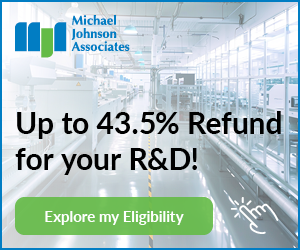Towards 3% R&D – The right question? Or are there bigger issues by Allen Roberts

Are we actually asking the question in our editorial series – Towards 3% R&D – Turbocharging Australia’s Innovation Effort. Here Allen Roberts looks behind the issue at the Australian way of getting things done, and whether that, itself, needs reform.
As we seek to move towards 3% of GDP as a measure of the R&D in the economy, we are assuming that simply increasing the percentage will increase the output, in some sort of linear manner.
Ranking as we do at 93 in the world in the Harvard Atlas of Economic Complexity, squeezed between Uganda on 92 and Pakistan at 94, we need to do something different.
Have we asked the question: what changes need to be made to the multi-jurisdictional, fragmented and short-term focused system we have currently?
In my view we should.
Before we throw more effort and money into the existing system, we should be questioning if the system is able to deliver the outcomes being sought in an optimised manner.
Assuming we elect to keep the existing system, a given I suspect, we should start by asking challenging strategic questions about the technology domains we need to focus on, that aim to contribute to the shape of the economy we envisage in a decade or two.
That is easy to say, sadly, it is extraordinarily hard to do – it is even harder for the answers that may emerge to get any traction, by way of public awareness and funding.
Without exception, the questions we must ask will run against the readily available answers that reflect just the extrapolation of the status quo, perhaps with a few wrinkles.
Inevitably, multiplying the complexity of the challenges faced will present problems with no apparent answers, or they would have been answered before.
Catalysing change
That is why the cycle from science to commercialised product is so long, in most cases, 30 years or more – change needs a catalyst, which usually comes from unexpected angles.
@AuManufacturing is publishing contributions from readers for our series – Towards 3% R&D – turbocharging our national innovation effort – over a, month and in an e-Book, and we urge you to contribute. Call Peter Roberts, 0419 140679 or write to [email protected].
Take the development of mRNA vaccines during Covid.
To most this was a rushed and half-baked process, as we all know that the pharma innovation cycle is at least a decade, from identification of a molecule of value, through product development and increasingly demanding levels of clinical trial. Here, it happened in 18 months. Or did it?
The logic of what became mRNA was first articulated in 1956, and suddenly the catalyst of Covid emerged, and the next decade or longer of development was compressed into the 18 months.
The question here was: can the expensive and technically very difficult production of mRNA be proved and scaled in 18 months?
Clearly the answer was ‘yes’ and now we have mRNA as part of the pharma arsenal.
What is the urgent need now
The Prime Minister Anthony Albanese has committed a billion dollars to developing a manufacturing plant in the Hunter that produces photovoltaic solar panels.
On the surface, it is dumb, and has been condemned by many, including yours truly, and chair of the productivity Commission Danielle Wood.
However, what if we asked the mRNA question: Can the production of electricity from solar be re-engineered to use advanced technology and can the plant be a ‘next technology generation’ solar plant that sets a whole new standard?
The whole basis of the current argument that the investment can never be commercially viable because the Chinese have a stranglehold on the existing technology and cost structure is out the window.
A new plant using new technology, delivering lower cost structures and capital productivity would make the current dominating technology redundant.
The intensity of intellectual effort required to ask and investigate these alternative questions is extreme.
The odds of one of them identifying an opportunity that is, with the benefit of hindsight, a ‘unicorn’ is tiny, so the political risk is significant.
However, if we allow ourselves to be seduced by the fantasy of doing more of what has resulted in our current situation and expecting a better outcome, we will deserve the shellacking the investment will receive.
Allen Roberts is a catalyst for thinking differently for enterprises facing change. In a career of more than 40 years he has worked with manufacturers creatively, and been an advocate for deeply considered change. Allen is Director of consultants StrategyAudit.
This series is brought to you through the support of our principal sponsor, public accounting, tax, consulting and business advisory BDO, and R&D tax incentive consultancy Michael Johnson Associates.
Picture: Allen Roberts
@aumanufacturing Sections
Analysis and Commentary Awards Defence Manufacturing News Podcast Technology Videos











